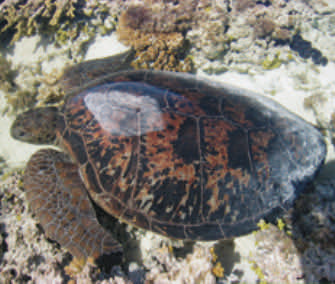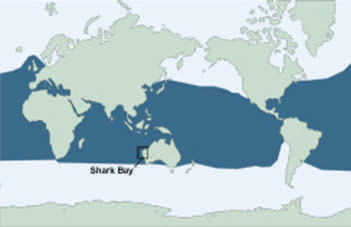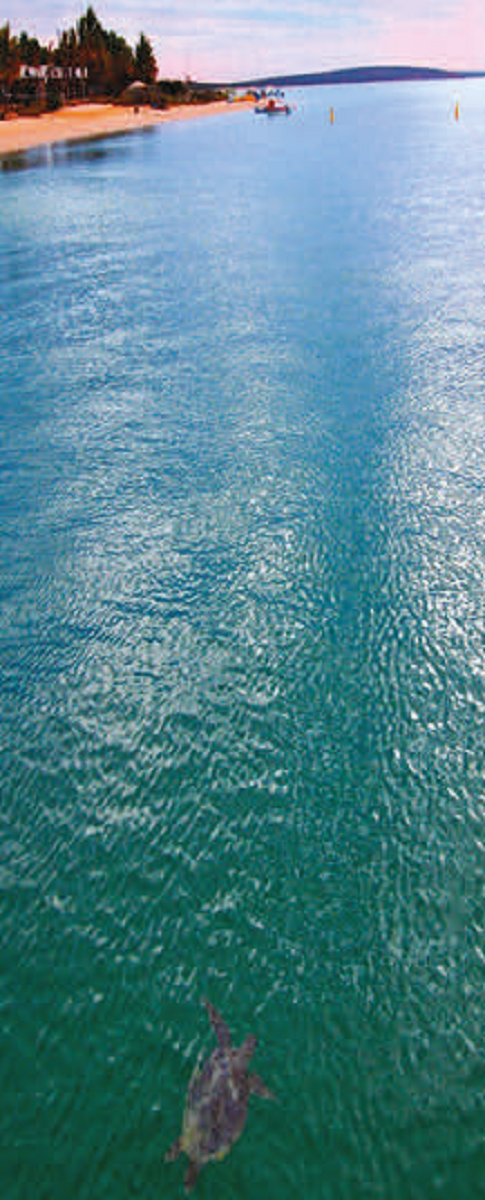Green Turtle
Green turtle
Chelonia mydas
Description

| Length Up to 1.5m |
Weight 130-180kg |
Lifespan 80 years |
The green turtle is named for the colour of its fat, not its shell. The smooth, high-domed shell of this turtle is mottled olive green, brown and black. The main features distinguishing this turtle from other marine turtles are a single pair of scales in front of the eyes, a serrated bottom jaw and the number of lateral scutes making up its carapace.
Diet and habitat

Green turtles live in tropical and subtropical seas around coral and rocky reefs and seagrass meadows. They only leave the water briefly to nest. Adults graze on seagrass and seaweed while young also eat jellyfish.
Breeding

| Maturity 33 years |
No. eggs 115 |
Incubation 50-70 days |
Breeding occurs about once every six years. Females nest from late October to February in the area they hatched. Like other marine turtle species, females mate with several males and store the sperm for use later in the season when they can lay up to five clutches. Hatchlings weighing about 25 grams emerge between December and May.
Distribution

With an enormous amount of seagrass, the Shark Bay World Heritage Area is popular with green turtles. Like other species, they use a special ‘magnetic compass’ in their brain to find their home beach, which might be hundreds of kilometres away.
Distribution

Human disturbance to feeding and nesting areas, entanglement in fishing gear, choking on rubbish, dredging, hunting and boat strikes all threaten green turtles.
Fact sheet
SHARK BAY
World Heritage



